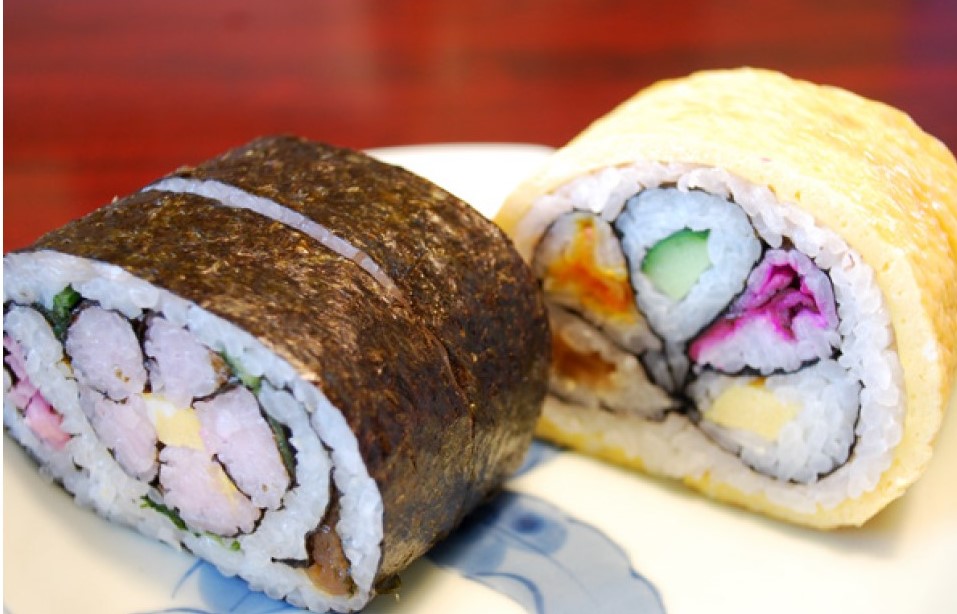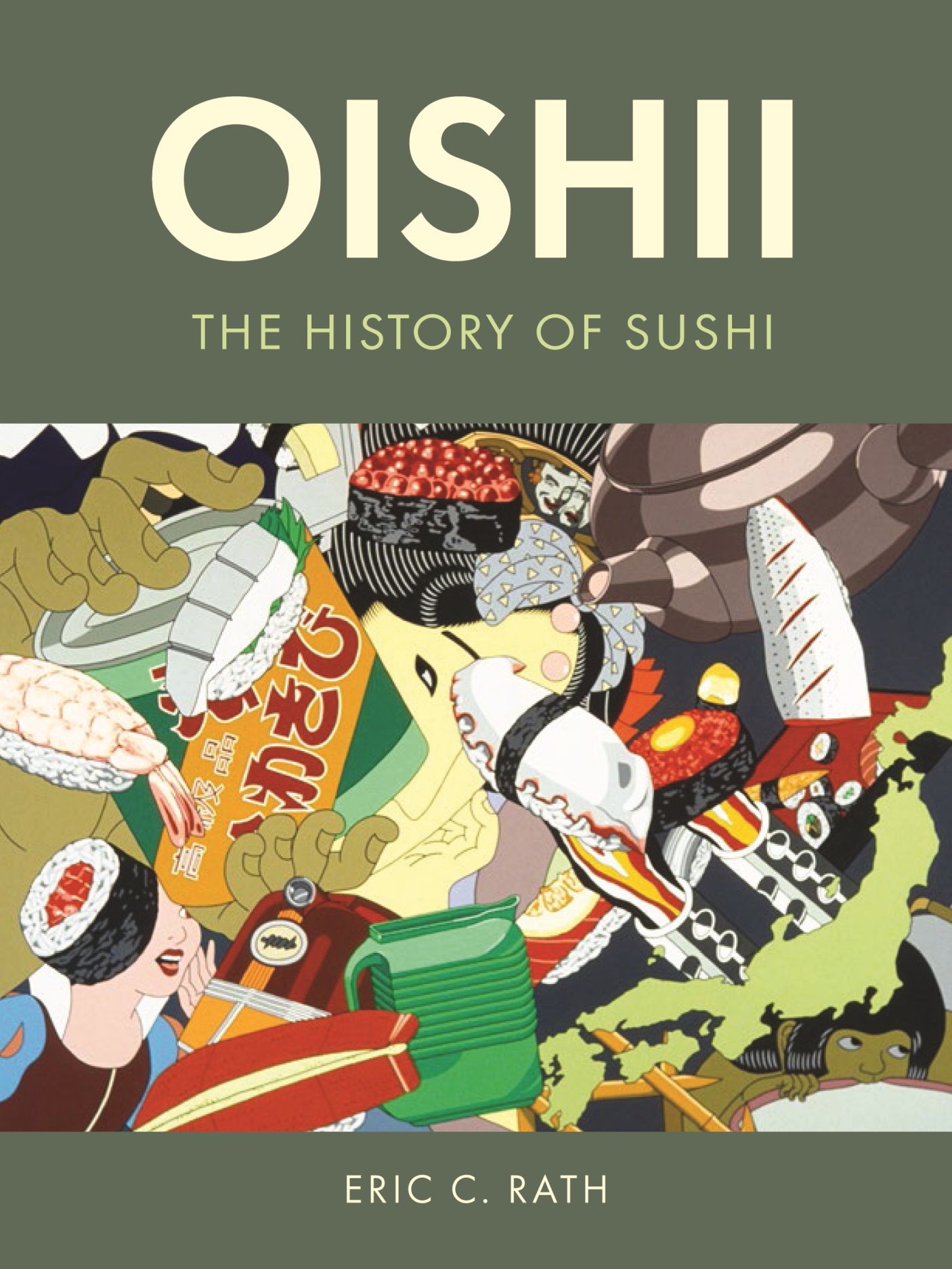History and evolution of sushi chronicled in 'Oishii' book

LAWRENCE — There are 34,000 species of fish. And they all have their own flavor.
 “People like to discover the fact you don’t always have to bake or fry a fish. All different kinds of fish have different tastes, and sushi lets you experience that,” said Eric Rath, professor of history at the University of Kansas.
“People like to discover the fact you don’t always have to bake or fry a fish. All different kinds of fish have different tastes, and sushi lets you experience that,” said Eric Rath, professor of history at the University of Kansas.
His new book, titled “Oishii: The History of Sushi” (Reaktion Books/University of Chicago Press), offers the first comprehensive chronicle of sushi written in English. It traces sushi’s development from the Far East to the rest of the world, and from humble street food to high-class cuisine.
“Even though this dish has been popular since the 1980s, no one’s really looked at its history in depth,” he said.
“It also introduces all sorts of different types of sushi — some that people are familiar with but also unfamiliar ones from centuries past. The most interesting of these are the fermented types of sushi. You can make a fermented sushi with almost any kind of fish, and there are recipes that use vegetables as well.”
Rath, who teaches a course on the history of sushi at KU, has written extensively about Japanese food and culture, including the books “Japan’s Cuisines: Food, Place and Identity,” “Food and Fantasy in Early Modern Japan” and “Japanese Foodways, Past and Present” (with Stephanie Assmann).
 “In its most basic form, whether it’s just a little sushi rice with a slice of fish on top, it’s one of the most minimalistic dishes ever created. Of course, there’s a lot more that goes into it — and it has become quite complicated and diverse — but it’s still very lean and geometrical either way,” he said.
“In its most basic form, whether it’s just a little sushi rice with a slice of fish on top, it’s one of the most minimalistic dishes ever created. Of course, there’s a lot more that goes into it — and it has become quite complicated and diverse — but it’s still very lean and geometrical either way,” he said.
The experience of writing the book (which features cover artwork by KU emeritus professor Roger Shimomura) has made Rath “rethink Japanese food history,” in terms of discovering the actual story behind many dishes and techniques popularized within the industry.
“As a food historian, I’m always wondering what things tasted like in the past,” Rath said.
“When you’re confronting the history of sushi, people often say, ‘This is the most ancient type of sushi that still exists. This was made 1,000 years ago.’ I’m often very dubious about those sorts of claims. And when you investigate them a little bit, you realize it’s not the case — it was maybe something similar to what was made back then. To try to historicize taste presents a real challenge.”
In the states, sushi emerged during the 1960s in cities with large Japanese populations such as Los Angeles and New York. But as Japan’s economic power grew, more Americans became interested in the country’s culture.
“You started noticing sushi everywhere in the 1980s, which is also the height of Japanese economic power,” Rath said. “There was the ‘Shogun’ TV series; John Belushi, who is a true sushi lover, as the samurai chef in a number of ‘Saturday Night Live’ skits; a song by The Tubes called ‘Sushi Girl’; and that film ‘Repo Man’ with its famous line, ‘Let’s go get sushi and not pay.’”
Rath’s own introduction to the dish was because of “The Breakfast Club.” That 1985 teen comedy features a scene where Molly Ringwald’s preppy character brings a bento box to her weekend detention.
He said, “I was in high school when that movie came out, and that iconic sushi scene stuck with me when one of the other characters says, ‘You won’t accept a guy’s tongue in your mouth, and you’re going to eat that?’ I remember thinking, ‘Oh, we have to try this!’”
So he persuaded a friend to accompany him to a local sushi restaurant. Unfortunately, when the elegant plate of food arrived at his table, the pair had no idea how to actually eat it until a waiter politely explained the procedure.
Rath said what passes for sushi in the U.S. is often quite different from what’s found internationally.
“In America, the most representative example of sushi is the California roll. This concoction, where the rice is on the outside with imitation crab, avocado and mayonnaise on the inside, is sort of the poster child and gateway drug for American sushi. People who taste that might go, ‘I want to try some more authentic sushi,’” he said.
“Whereas in Japan, the most emblematic food is fatty tuna — just a slice of fish on top of sushi rice.”
While “Oishii” (which translates to “delicious”) delves into the past, the book also keeps its sights on the future.
“One of the amazing things about sushi is it’s always undergoing changes,” Rath said.
“You can’t point to a time in history where it was static and wasn’t undergoing some sort of evolution. That’s the fascinating thing about it. We now have sushi burritos, sushi doughnuts, sushi bagels, sushi pizza. There are all kinds of possibilities for sushi.”
Top photo: A large sushi roll called futomakizushi served in Katori City, Chiba, Japan. Photo by Katorisi, Creative Commons.